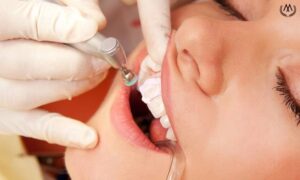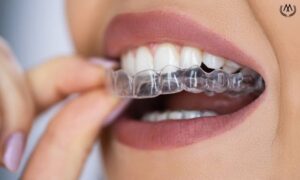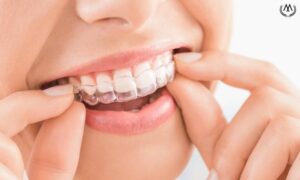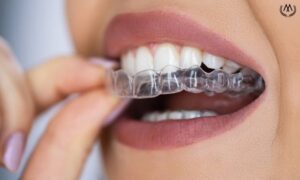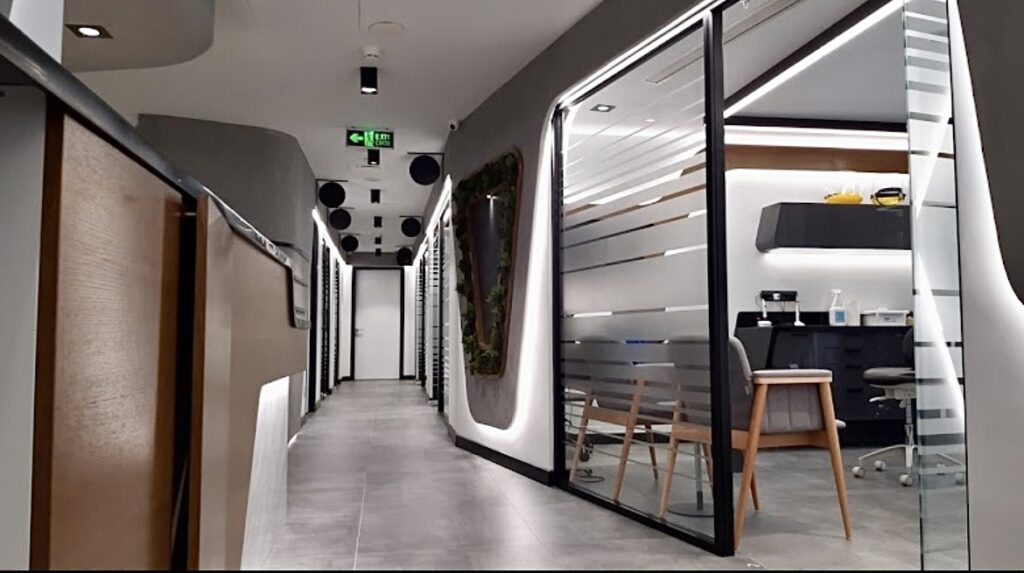Clear aligners are an innovative and aesthetic method used for teeth straightening. They provide an alternative to traditional braces, helping patients achieve their desired smile. In this article, we will discuss how clear aligners work, their advantages and disadvantages, the application process, and other important information.
What are Clear Aligners?
Clear aligners are custom-made plastic trays that fit over the teeth to straighten them. They are designed specifically for each patient and are shaped to suit the natural structure of their teeth. Typically made from materials like polycarbonate, these aligners are transparent, durable, and flexible.
How Do They Work?
Clear aligners help move and straighten teeth gradually using a few basic principles:
- Custom Design: Aligners are created based on precise measurements taken by a dentist or orthodontist. Each set of aligners is designed to move the teeth to the next stage of alignment.
- Gradual Adjustment: The aligners apply gentle pressure on the teeth to move them slowly into the desired position. Each aligner set is worn for a specific period, typically one to two weeks, before moving on to the next set.
- Visibility: Due to their transparent nature, clear aligners are less noticeable than traditional braces, allowing users to wear them comfortably in daily life.
Advantages and Disadvantages
Clear aligners have several notable advantages and disadvantages compared to other orthodontic methods:
Advantages:
- Aesthetic Appeal: They are more aesthetically pleasing and less noticeable than traditional braces.
- Removability: Users can remove the aligners for eating, brushing, and flossing, making oral hygiene easier.
- Comfort: Clear aligners tend to cause less discomfort and pain compared to metal braces.
Disadvantages:
- Complex Cases: In some complex cases, traditional braces may be more effective.
- Cost: Regular replacement of aligners can be costly.
- Discipline: Consistent wear and regular changing of aligners require a high level of discipline from the user.
Application Process
The process of applying clear aligners generally involves the following steps:
- Examination and Planning: The dentist or orthodontist examines the patient’s teeth and takes measurements to plan the aligner design.
- Fabrication of Aligners: Based on the measurements and plan, custom aligners are manufactured in a lab.
- Application and Monitoring: The aligners are fitted onto the patient’s teeth, and regular check-ups are scheduled to monitor progress and make necessary adjustments.
- Evaluation of Results: After completing the treatment, the final position of the teeth is evaluated to ensure the desired outcome has been achieved.
Conclusion
Clear aligners are an ideal option for patients concerned with aesthetics and seeking an alternative to traditional braces. This treatment method, when properly applied, can yield successful results for each individual patient. However, it is always important to consult with a dental professional to determine the best treatment option for your specific needs.


